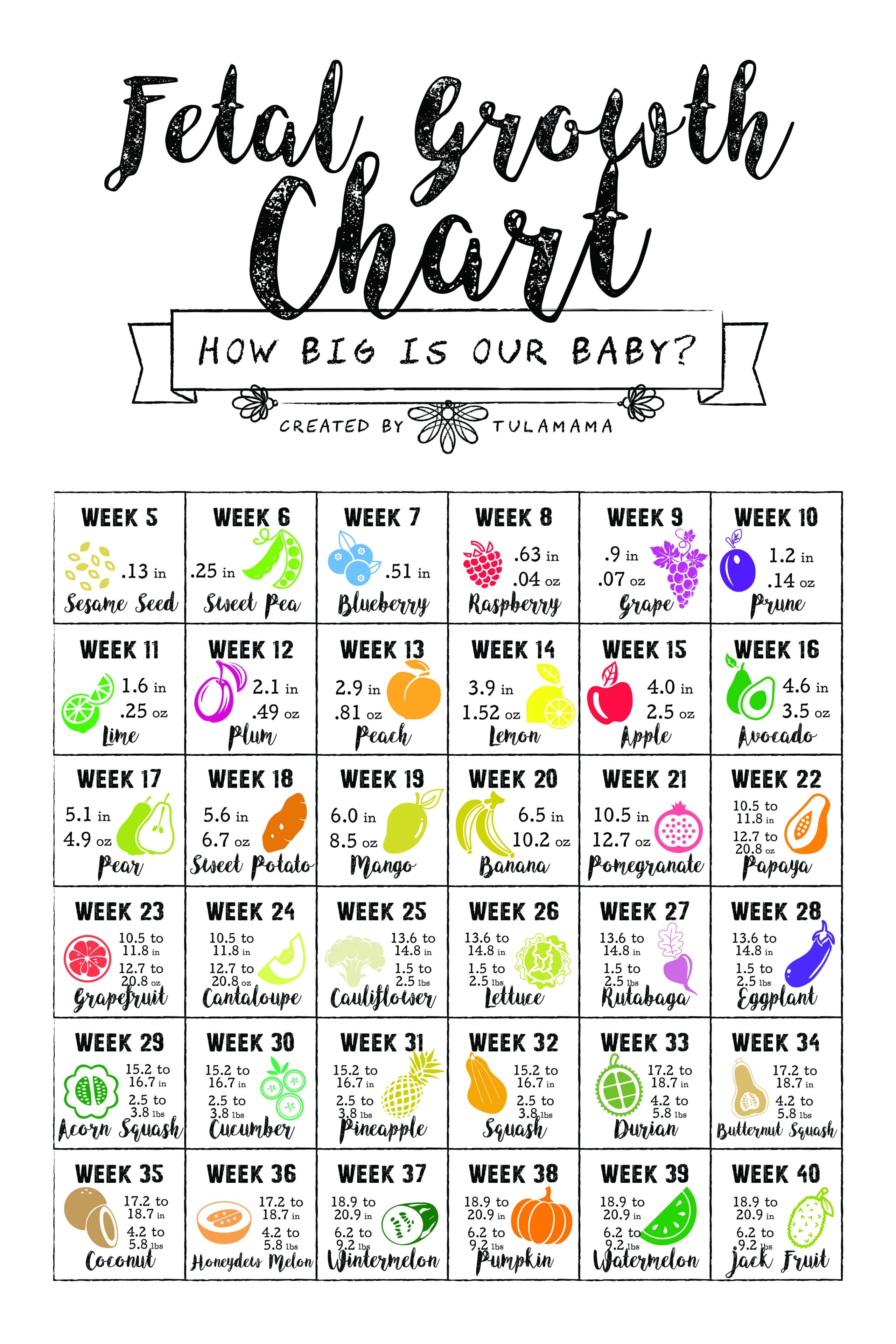As a new mom, it’s normal to constantly wonder if your baby is growing as they should. After all, there’s no doubt that monitoring your baby’s growth is an important part of their development. You want to make sure that they’re healthy and thriving, and one way to do that is to use a baby size development chart.
Table of Contents
What Is a Baby Size Development Chart?
A baby size development chart is a tool that tracks your baby’s growth over time. It’s a handy way to keep track of your baby’s height, weight, and head circumference as they grow through infancy and into toddlerhood.
Most pediatricians use these charts to evaluate your child’s growth and development, and they’re based on data collected from thousands of children. The charts are divided into percentiles, which show where your baby falls in terms of size and weight compared to other babies of the same age and sex.
Why Is It Important?
Monitoring your baby’s growth is important for several reasons. It helps to identify any potential health issues early on so that they can be treated quickly. It’s also a way to make sure that your baby is getting enough nutrition and calories to support their growth and development.
The baby size development chart is also useful for identifying growth spurts. For example, if your baby suddenly jumps up a few percentiles in weight or height, it’s a sign that they’re going through a growth spurt. This is a normal part of development, but it can be reassuring to see it reflected in the chart.
How to Read a Baby Size Development Chart
When you look at a baby size development chart, you’ll see a series of lines that represent the different percentiles. The lines are color-coded to make it easy to see where your baby falls. For example, if your baby is in the 50th percentile for height, they’ll be right in the middle of the chart.
You’ll also notice that the lines on the chart are not evenly spaced. This is because babies tend to grow faster in some stages than others. For example, a baby may gain weight quickly in their first few months, but then slow down as they become more active.
When to Use a Baby Size Development Chart
Your pediatrician will likely use a baby size development chart at every well-child visit. They’ll measure your baby’s height, weight, and head circumference and plot the measurements on the chart. This will give you an idea of how your baby is growing compared to other babies of the same age and sex.
If you’re concerned about your baby’s growth or if you notice any significant changes in their growth pattern, talk to your pediatrician. They may recommend more frequent measurements or additional testing to rule out any underlying health issues.
Conclusion
A baby size development chart is an essential tool for monitoring your baby’s growth and development. By using the chart and working with your pediatrician, you can ensure that your little one is growing as they should and getting the nutrition they need to thrive.
Remember, every baby is unique, and there’s no one “right” size or shape. The chart is simply a way to track your baby’s growth and detect any potential issues early on. With the help of your pediatrician, you can rest assured that your baby is on the right track.
Frequently Asked Questions
Q: Can using a baby size development chart predict my child’s future height?
A: No, a baby size development chart is not a predictor of your child’s future height or weight. While genetics play a role, there are many other factors that can influence your child’s growth, such as nutrition, environment, and overall health.
Q: Is it normal for my baby to be in a lower percentile?
A: Yes, it’s perfectly normal for babies to fall in a lower percentile on the chart. As long as your baby is growing and gaining weight steadily, there’s no need to be concerned.
Q: What should I do if my baby falls off their growth curve?
A: If your baby falls off their growth curve, it’s important to talk to your pediatrician. They may recommend additional testing or monitoring to rule out any underlying health issues.
Q: How often should my baby be measured and plotted on the chart?
A: Your pediatrician will likely measure and plot your baby’s growth at every well-child visit. This usually occurs at 2 weeks, 1 month, 2 months, 4 months, 6 months, 9 months, 12 months, 15 months, 18 months, 2 years, and 2.5 years.
Q: Can the baby size development chart be used for premature babies?
A: Yes, the chart can be used for premature babies, but it may need to be adjusted to account for their gestational age. Your pediatrician will be able to provide guidance on how to use the chart for your premature baby.
